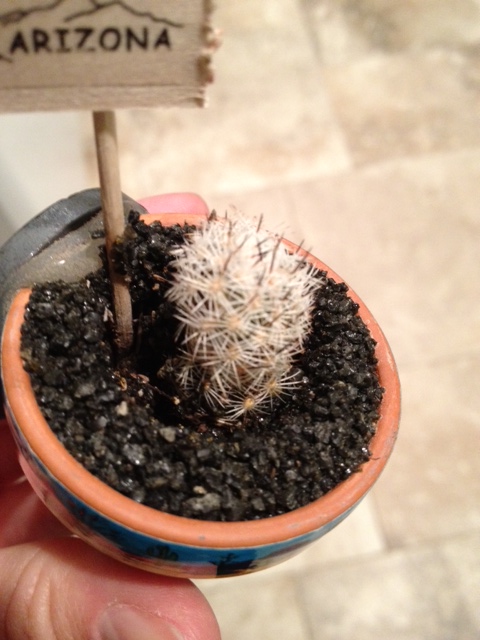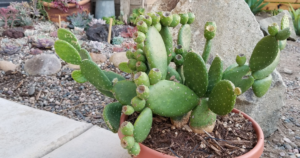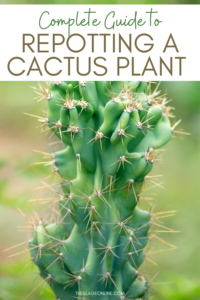Are you a cactus enthusiast, nurturing your prickly companions with love and care? Or perhaps you’re flirting with the idea of introducing these resilient plants into your home? One of the most intimidating challenges encountered in the plant world is distinguishing between a thriving cactus and one that has met its untimely demise. So, how can you tell if your cactus is dead? Let’s embark on an expedition into the world of cacti, unearthing the telltale signs that should never be overlooked.
Welcome to the Subtle World of Succulents
Cacti, known for their ability to thrive in harsh conditions, can sometimes masquerade signs of distress. However, astute observation can reveal an intricate tapestry of health indicators. If you’ve noticed a decline in your cactus’s vigor, it’s essential to educate yourself on potential warning signals. Understanding these signs not only aids in nurturing your plants but can also be a gateway to developing a more profound relationship with nature.
Visual Clues: The Outer Appearance
One of the most striking ways to determine the health of your cactus is by examining its outer appearance. An obvious starting point is to inspect the skin. A vibrant cactus will typically display a robust, firm exterior. However, if the texture turns soft and mushy or if you notice discoloration—shades of browns, blacks, or yellows—it may be time to face a harsh reality.
Desiccation reveals another fascinating aspect of cactus life, often stemming from drastic environmental changes or neglect. If you observe shriveling or significant shrinkage, consider it a clarion call. Desert adaptations are remarkable, but excessive dehydration can lead to irreversible damage.
Don’t ignore the presence of pests! The hidden threats can be detrimental, with mealybugs and scale insects quietly siphoning the life essence from your beloved cactus. Their telltale signs include a white, cottony residue or the presence of sticky honeydew. These should prompt immediate action, as they are not merely cosmetic concerns.
Structural Integrity: The Role of Stability
Beyond the superficial, a solid cactus should stand tall and proud. An inability to maintain its erect posture may indicate root rot. A cactus that leans unnaturally or appears to be top-heavy suggests it may be grappling with its own mortality. Check the soil—if it is overly saturated, root rot could be the culprit. Swift corrective measures must be taken; otherwise, your cactus may fast-track its journey towards death.
The Mystery of Resin and Fluid Accumulation
Curiously enough, the internal health of a cactus can often be determined by minute external signs, especially concerning fluid accumulation. If you notice excessive weeping or oozing, particularly from the base or puncture points, it’s likely a sign that the plant is under duress. Fluid secretions are aligned with cactuses experiencing stress, often a precursor to rot. Investigating the root conditions—whether the soil is too compact or has poor drainage—can be instrumental in rescuing your crumbling friend.
Responses to Environmental Stressors
Cacti have evolved to withstand severe conditions; however, they still possess limits. A sudden drooping or wilting can be indicative of a sudden environmental shift. If temperatures plunge or humidity levels unexpectedly rise, cacti may respond defensively, sometimes exhibiting distress signals akin to panic. Regular monitoring can help you anticipate these changes, allowing you to adjust care protocols preemptively.
Seasonal Changes: Adapt or Perish
As the seasons change, the growth patterns of cacti can often reveal crucial indicators of their health. An active growing season typically sees flourishing growth and vibrant coloration. Conversely, if your cactus refuses to put forth any new growth during its expected cycle, consider it a warning signal. This dormancy could be your cactus’s way of signaling unhappy roots or insufficient light.
Delve into Nutritional Needs
Upon reflection, it’s crucial to highlight that nutritional deficits can also contribute to a cactus’s degradation. If you notice stunted growth or discolored spines, these issues may stem from insufficient fertilization or nutrient-poor soil. Understanding the specific needs of your cactus species can lead to profound improvements. For instance, incorporating a specialized fertilizer during the growing season can provide your plant with the nutrients it craves to flourish.
Final Thoughts: The Tincture of Patience
In conclusion, recognizing the signs that a cactus may be dead is pivotal for any succulent caretaker. Understanding these indicators is not merely a task; it is a commitment to nurturing life in the face of adversity. Every prickly plant has its own story, and through vigilant observation, you can uncover its unspoken struggles. Whether it requires light, water, or nutrients, your role as the caretaker is crucial.
So, the challenge is set: how will you respond if your once-thriving cactus begins to show signs of distress? Your attentiveness could mean the difference between life and death for your spiky friend. Master these signs, and hopefully, your cacti will flourish, becoming a testament to resilience in a world fraught with challenges.





Leave a Comment